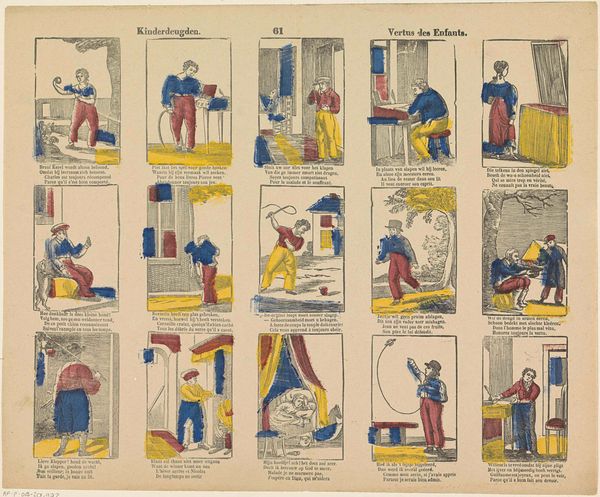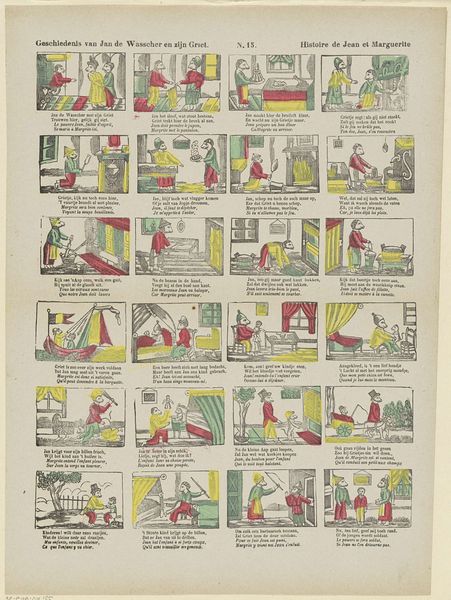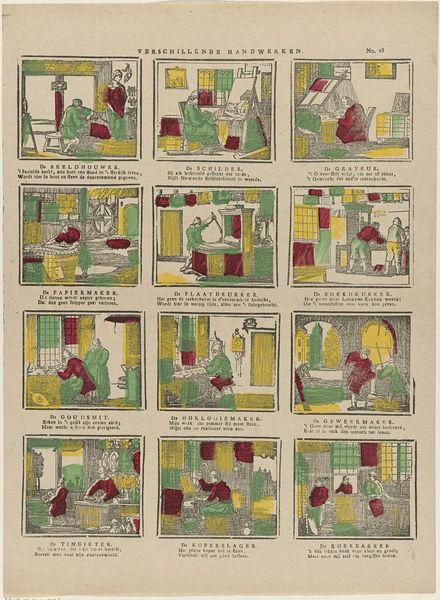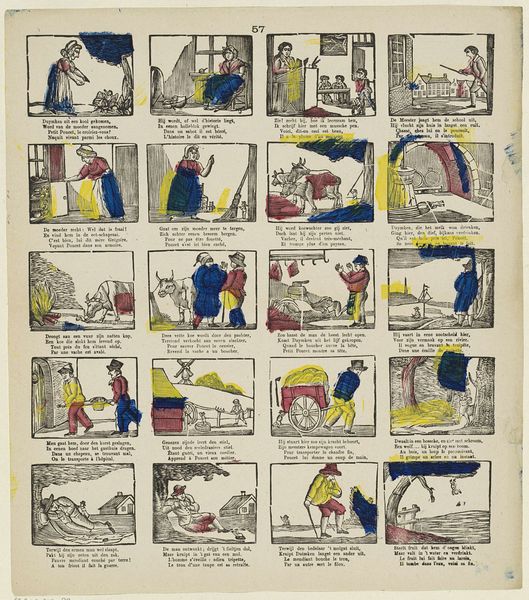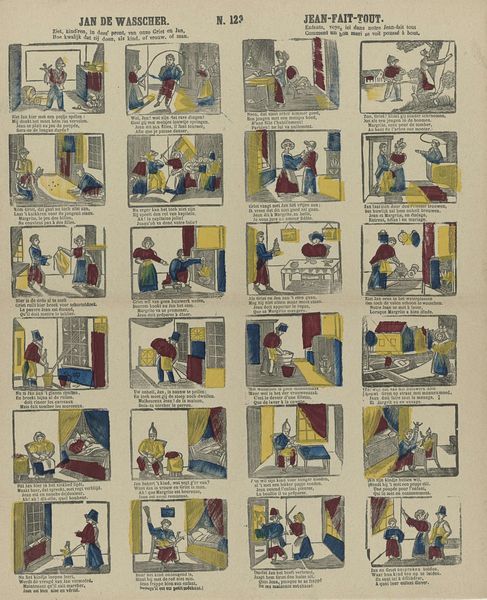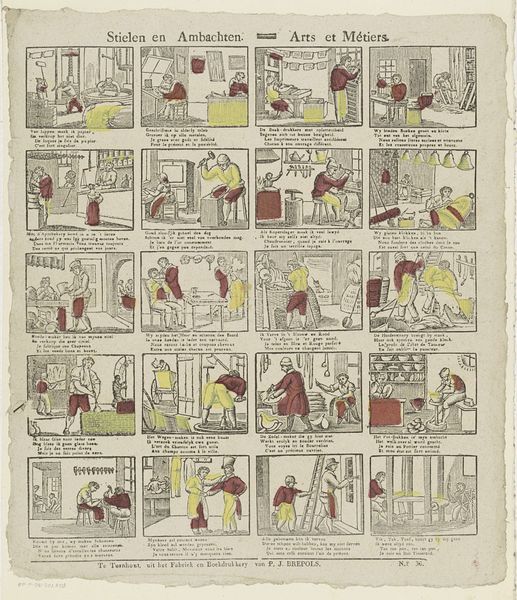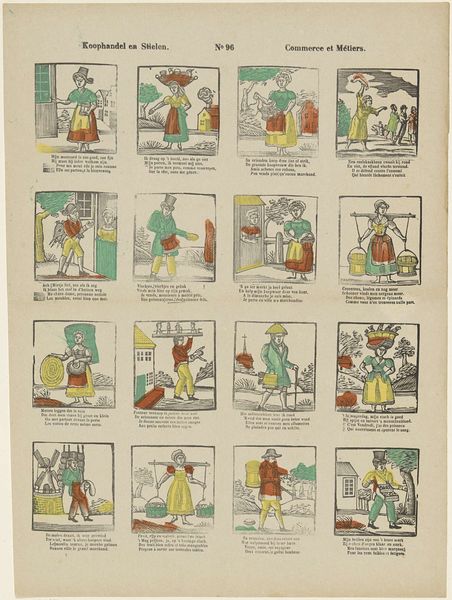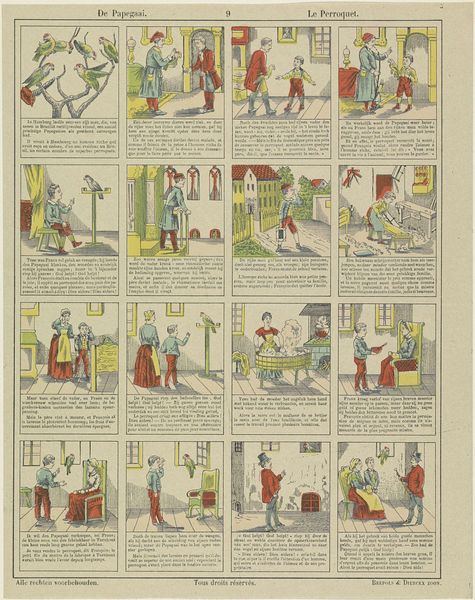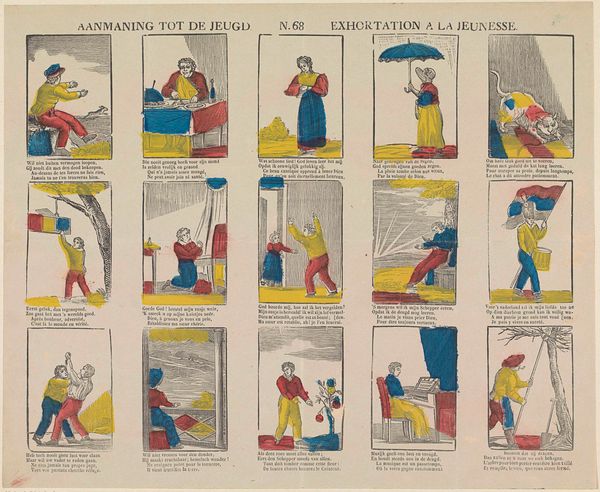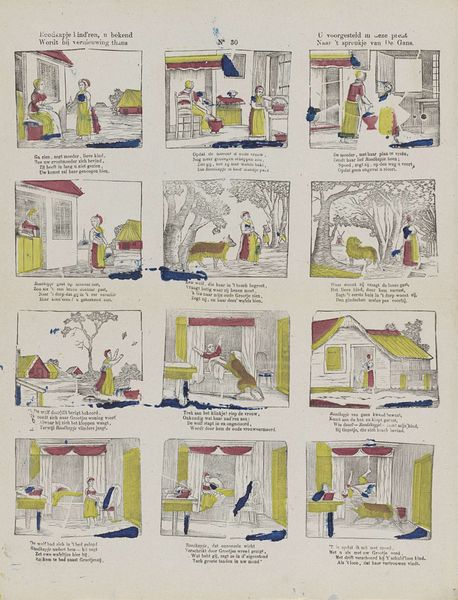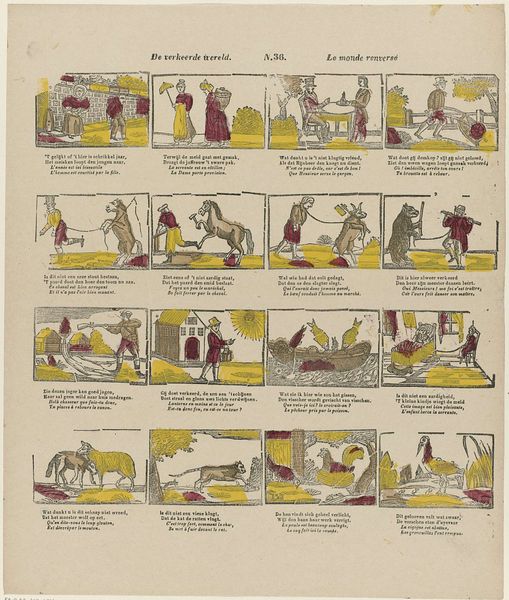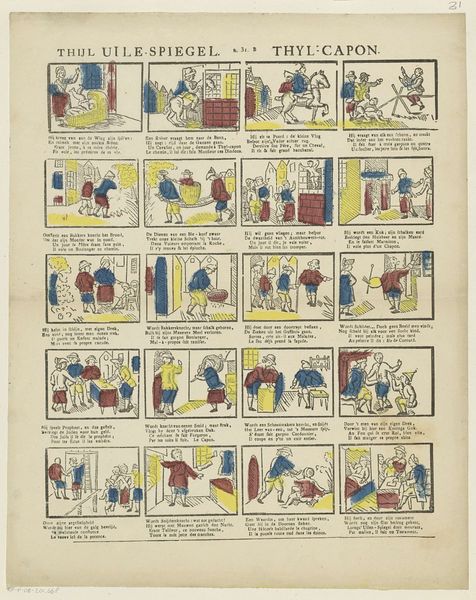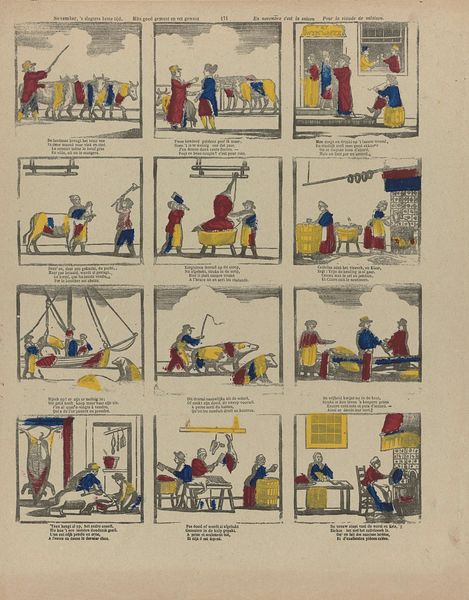
Door liefdegedrongen, besteê ik deze plaat ten dienste der jeugd; Aanvaard die ô wichtjes! zij zal u bereiden den weg tot de deugd / Cette estampe, par â la jeunesse; Elle ouvre, à tous la voie de la sagesse 1800 - 1833
0:00
0:00
print, etching
#
neoclacissism
#
narrative-art
#
comic strip
# print
#
etching
#
traditional media
#
personal sketchbook
#
comic
#
genre-painting
Dimensions: height 339 mm, width 421 mm
Copyright: Rijks Museum: Open Domain
Curator: I see this etching, dating back to the early 19th century, strikes you. It’s titled "Door liefdegedrongen, beste...". What captures your eye? Editor: It feels like an early form of comic strip, made using print and etching. What's striking is that they wanted to use this format for education and moral guidance, which I guess must have made this kind of production popular, right? What can you tell me about the role of the means of production, like printmaking, in shaping popular values and ideas? Curator: The piece definitely encourages us to think about printmaking and wider consumption in society. These printed sheets, relatively cheap to produce, would have made narratives and moral lessons widely accessible. Think of the labor involved – the etcher, the printer, the distributors. They are all participating in a network to influence societal values. Editor: So, it is interesting how such material conditions influence social ones. And the fact that it's aimed at youth reinforces the sense of manufacturing consent through a widespread medium, doesn't it? Curator: Exactly. How are these values distributed? To what classes are these cheap prints available, and not available? What is it to make virtue a consumer good? These are useful questions here. Editor: It does bring an element of practicality and democratization, if morality lessons could be widespread by means of print. What’s also surprising is the use of a traditionally artistic technique for more commercial means. Did this blur the lines of 'high' and 'low' art? Curator: It’s about labor, materiality and consumption, but also the exchange and transformation between the classes and cultural ideas. Yes, and consider the artist too. They're not just an artist, but a producer within a market. They mediate ideals into a commodity. How do these material choices impact meaning? Editor: Now I’m realizing how the printing medium transforms the meaning. What used to be an individual piece of art can become social and affordable for some through commercial print. I guess it allows a message to circulate more. Curator: Precisely! Analyzing art is really about tracing these systems of labor and exchange, acknowledging their effects on the values a work promotes.
Comments
No comments
Be the first to comment and join the conversation on the ultimate creative platform.
